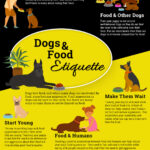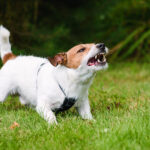Where Did The Phrase Raining Cats And Dogs Come From
Raining Cats and Dogs: The Origins of a Peculiar Phrase
Have you ever heard someone say it’s “raining cats and dogs” outside? Maybe you’ve used the phrase yourself to describe a heavy downpour. But have you ever wondered where this strange expression comes from? In this article, we’ll explore the history and meaning of “raining cats and dogs”, as well as some theories and myths surrounding its origin.
Before we delve into the details, let’s clarify what “raining cats and dogs” means. Essentially, it’s an idiom that signifies a sudden and intense rainfall, usually accompanied by strong winds or thunderstorms. While it may sound literal, the phrase does not imply that felines and canines are actually falling from the sky. Rather, it’s a metaphorical way of describing the severity and unexpectedness of the weather.
Now, let’s get to the question at hand: where did “raining cats and dogs” come from? As with many idioms, there is no definitive answer, but several hypotheses exist. Here are some of the most popular ones:
– Norse Mythology: One theory suggests that “raining cats and dogs” derives from an old Norse myth about Odin, the god of storms, who was accompanied by dogs and cats that symbolized wind (dogs) and rain (cats). When Odin was angry or in battle, he would send his animal companions down to earth to wreak havoc.
While this explanation has a certain poetic appeal, there is little evidence to support it. Moreover, other cultures have their own versions of animal-related weather lore that don’t involve Odin.
– Tudor Times: Another possibility is that “raining cats and dogs” originated in England during the Tudor era (1485-1603), when houses had thatched roofs made of straw or reeds. During heavy rains, these roofs could become slippery and unstable, causing animals like cats and dogs to fall through the ceiling onto the floor. Hence, it was said to be “raining cats and dogs” when this happened.
While this scenario is plausible, there are no historical records that explicitly link the phrase to Tudor roofs or animal accidents. Furthermore, the idiom didn’t appear in written English until the 17th century, long after the Tudor era ended.
– Dutch Language: A third theory posits that “raining cats and dogs” comes from a Dutch expression “katte en honden regen”, which means “a rain of cats and dogs”. This phrase allegedly referred to a type of heavy rain that resembled the sound of cats and dogs fighting on rooftops. When English-speaking sailors heard this phrase from their Dutch counterparts, they anglicized it into “cats and dogs”.
This explanation has some linguistic plausibility, as Dutch was a common language among seafarers and traders in the 17th century. However, the actual usage of “katte en honden regen” in Dutch literature or folklore is unclear. Moreover, why would such a specific term for rain exist in Dutch but not in English or other languages?
– Other Possibilities: There are many other suggestions for where “raining cats and dogs” might have come from, including:
– A corruption of the French word “catadoupe”, which means waterfall or cataract.
– An allusion to Noah’s Ark in the Bible, where various animals were gathered together during a flood.
– A pun on the Latin phrase “catadupa”, which means downpour or deluge.
– A metaphorical reference to how chaotic and noisy a storm can be, like a fight between cats and dogs.
While these theories are interesting, they suffer from similar drawbacks as the previous ones: lack of evidence, inconsistency across cultures and languages, and no clear connection to the idiom’s usage.
So, where does that leave us? In truth, we may never know for certain how “raining cats and dogs” came about. It’s possible that the phrase emerged from a combination of different sources and contexts over time, evolving into the familiar expression we use today. Or it could be that someone made it up out of sheer whimsy or wordplay, and it caught on.
Regardless of its origin, “raining cats and dogs” remains a vivid and memorable way of describing a stormy weather event. It’s also an example of how language can transform ordinary objects or actions into extraordinary images that capture our imagination. Who knows what other weird and wonderful idioms we might come up with in the future?
In conclusion, next time you hear someone say “it’s raining cats and dogs”, you can impress them (or annoy them) with your knowledge of the phrase’s history. Whether you prefer Odin’s wrathful pets or Tudor roof mishaps as the true inspiration, one thing is clear: it takes more than a sprinkle to make it rain cats and dogs.



